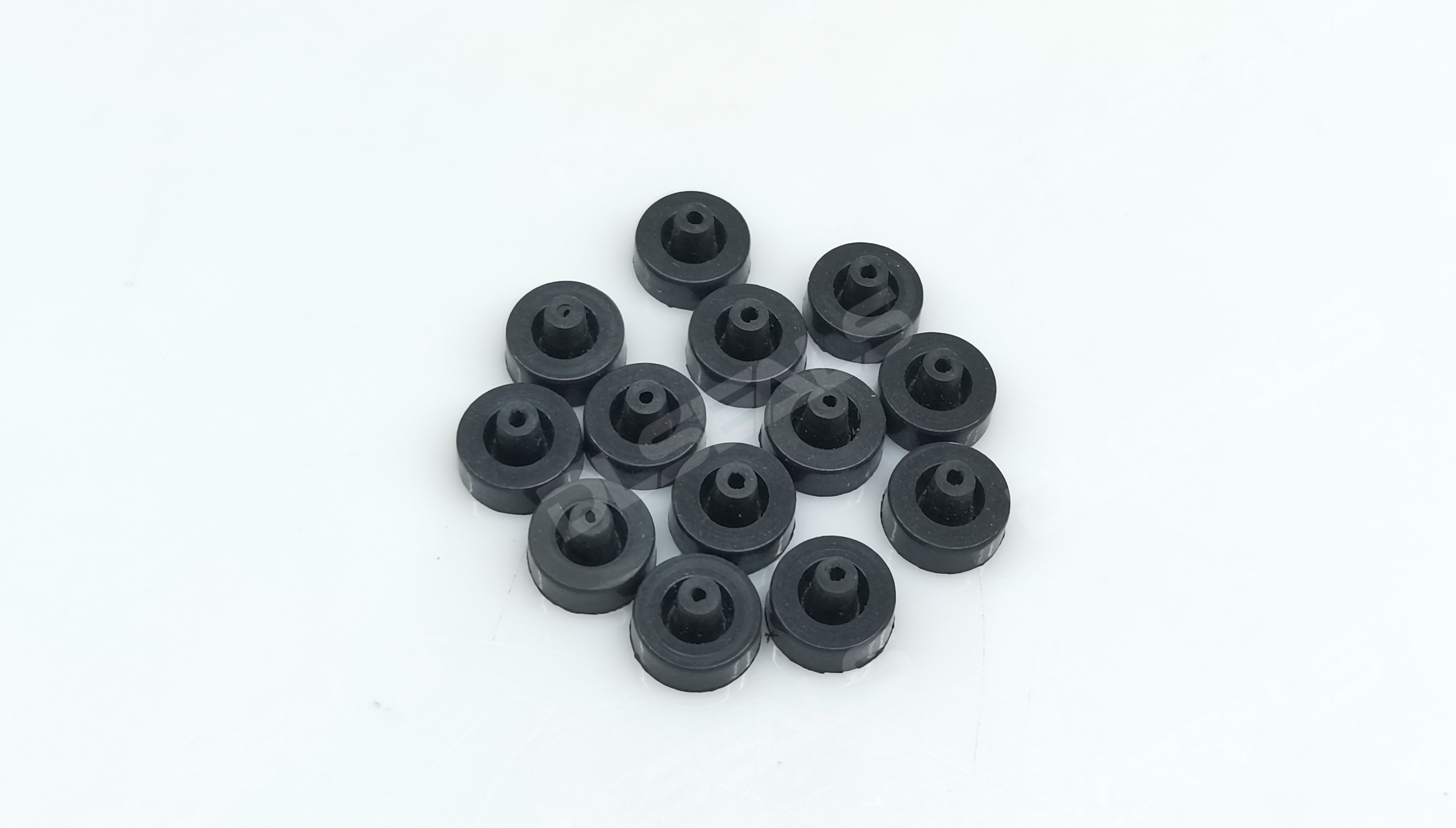The diaphragm of the dispensing machine is a crucial functional component in the dispensing equipment, and undertakes the core tasks of fluid delivery, pressure control and sealing protection. As the “heart” of the dispensing machine feeding system, its performance directly affects the dispensing accuracy, stability and equipment life. This article will deeply analyze the key role of this precision component from the aspects of material properties, working principles, application scenarios and technological innovation.
Core functions and material properties of the diaphragm of the dispensing machine
The diaphragm is the core sealing and pressure regulating component of the fluid delivery system of the dispensing machine. It is usually made of flexible materials and realizes the precise delivery of glue liquid through periodic deformation. Its core functions include:
Fluid isolation: completely isolate the driving medium (such as compressed air) from the glue liquid to avoid contamination or chemical reaction;
Pressure transmission: convert air pressure or hydraulic pressure into the delivery power of the glue liquid to ensure stable flow;
Dynamic sealing: maintain sealing under high pressure (up to tens of MPa) conditions to prevent leakage.
Material selection:
Polytetrafluoroethylene (PTFE): has excellent corrosion resistance (resistant to strong acids, strong alkalis and organic solvents), low friction coefficient (reduced wear) and wide temperature range adaptability (-200℃~260℃), and is an ideal material for high-end diaphragms;
Fluororubber (FKM): suitable for high temperature (below 200℃) dynamic sealing scenarios, with both elasticity and oil resistance;
Composite laminated materials: such as PTFE and stainless steel mesh composite, to improve compressive strength and fatigue resistance.
Working principle of diaphragm in glue dispenser
The diaphragm of glue dispenser realizes precise control of fluid through periodic deformation, and its working process can be divided into three stages:
Glue suction stage: the drive system (air pressure or hydraulic pressure) pushes the diaphragm to deform to one side, the volume of glue cavity increases, and negative pressure is formed to suck glue;
Pressure holding stage: the diaphragm maintains the deformation state, maintains the pressure of glue cavity stable, and ensures continuous delivery of glue;
Glue discharge stage: the drive system acts in reverse, the diaphragm resets and squeezes the glue cavity, and pushes the glue to be accurately output through the glue dispensing head.
Technical advantages:
No pollution: the physical isolation design prevents the glue from contacting the driving medium, which is especially suitable for high-cleanliness scenes such as medical and electronics;
Long life: polymer materials such as PTFE are wear-resistant and can withstand millions of deformation cycles;
High precision: the deformation amount is linearly related to the pressure, and with the closed-loop control system, the flow error can be controlled within ±1%.
Application scenarios and industry needs
The diaphragm of the dispensing machine is widely used in fields that require high-precision fluid control. Typical scenarios include:
Electronic manufacturing industry
When applying solder paste to PCB boards and encapsulating chips, the diaphragm needs to withstand the shear force of high-viscosity glue (such as epoxy resin) to ensure flow consistency;
For example, in the process of smartphone screen bonding, the stability of the diaphragm directly affects the uniformity and yield of the glue layer.
Automotive industry
For the precise coating of body sealants and battery pack encapsulation glue, it is necessary to adapt to high-temperature curing environments (150℃~180℃) and vibration conditions;
The insulating glue coating of new energy vehicle motor coils requires the diaphragm to have electrochemical corrosion resistance.
Medical device production
In the assembly of disposable syringes and infusion sets, the micro-dispensing of medical silicone requires the diaphragm to achieve 0.01ml level accuracy;
Biocompatible materials (such as medical-grade PTFE) can avoid the risk of glue contamination.
Precision optics and semiconductors
In scenarios such as lens bonding and wafer packaging, the diaphragm needs to work in a dust-free environment and be resistant to solvent cleaning (such as isopropyl alcohol).
Technological innovation and future trends
Breakthroughs in materials science
Nano-enhanced PTFE: By adding carbon nanotubes or graphene, the creep resistance and thermal conductivity of the diaphragm are improved to adapt to ultra-high pressure (>50MPa) scenarios;
Intelligent response materials: Develop temperature-sensitive or pressure-sensitive polymer materials, and the diaphragm can automatically adjust the deformation to achieve adaptive flow control.
Structural design optimization
Multilayer composite structure: Adopting metal-polymer stacking design, taking into account strength and flexibility, and extending service life;
Miniaturization integration: Develop millimeter-level ultra-thin diaphragms for microelectronic dispensing needs, supporting 0.1μm-level flow regulation.
Intelligence and digitalization
Embedded sensors: Integrate strain sensors on the surface of the diaphragm to monitor the deformation and fatigue status in real time to achieve predictive maintenance;
Digital twin technology: Optimize the motion trajectory of the diaphragm through simulation models to reduce energy loss.
Selection and maintenance recommendations
Key selection parameters
Pressure rating: Select according to the maximum working pressure of the dispensing machine (such as 10MPa, 30MPa);
Chemical compatibility: Need to match the type of glue (acidic, alkaline or solvent-based);
Deformation life: PTFE diaphragm is usually nominally ≥5 million cycles.
Maintenance strategy
Regular inspection: Observe whether there are cracks or permanent deformation on the surface of the diaphragm;
Cleaning and maintenance: Use special cleaning agents (such as fluorocarbon solvents) to remove residual glue to avoid material aging;
Preventive replacement: Under continuous high-pressure conditions, it is recommended to replace the diaphragm every 6 to 12 months.
Conclusion
Although the dispensing machine diaphragm is small, it is an indispensable “invisible hero” in the field of precision manufacturing. From consumer electronics to aerospace, from micron-level packaging to 10,000-ton coating, its technological evolution has always been synchronized with industrial upgrading. In the future, with the deep integration of new materials and intelligent technologies, diaphragms will break through performance limits and inject a stronger “heartbeat” into intelligent manufacturing.
Post time: Feb-14-2025

